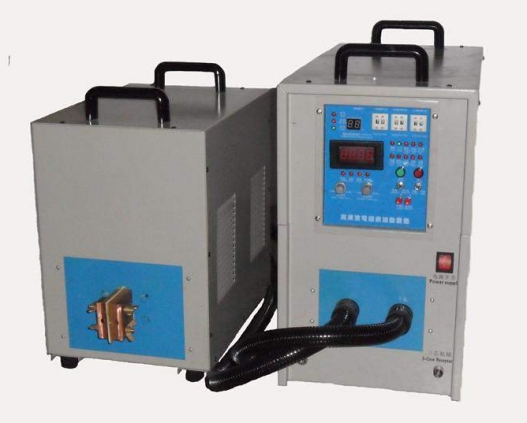- 10
- Mar
The solution to the deformation caused by the quenching of the circular saw with the high-frequency hardening machine
The solution to the deformation caused by the quenching of the circular saw with the high-frequency hardening machine
Circular saws can easily cut steel, have high hardness, wear resistance and service life, so they all need to be quenched and heat treated. The circular saw is no exception. For the hardening of circular saws, many manufacturers use high-frequency hardening machines. However, due to the influence of many factors during the quenching process, circular saws may produce deformation defects. Today, let’s take a look at the causes and preventive measures of deformation defects in the workpiece.
The 5Mn steel hot cutting circular saw has a large and thin shape, with a thickness of 3-10mm and a diameter of 300-2000mm. After heat treatment, it requires 29-38HRC and flatness <0.50mm. Large and thin circular saws deform greatly during heat treatment, and leveling is difficult. Therefore, reasonable technological measures should be adopted to restrain the undesirable factors that cause deformation and reduce the deformation to a minimum.
A. Causes of deformation.
1. When manufacturing the hot-cut circular saw, it needs to be machined by milling serrations, drilling mounting holes, and grinding both ends. In these processes, the external force causes the saw board to deform.
2. In addition to rolling errors, some of the slabs used for manufacturing hot-cut circular saws also have long rolling hard marks, which are difficult to level with heat treatment. In addition, there is a thin layer of oxide scale on the surface of the steel plate, which makes the circular saw uneven when heated and cooled by a high-frequency hardening machine, causing deformation.
3. At the initial stage of heating, the volume of the saw board will expand. Because the expansion of the surface and the core can not be synchronized, the thermal stress is large and the saw board is deformed. In addition, the saw board is heated at high temperature and is affected by its own weight and electromagnetic shock, which will also cause deformation.
4. After quenching, there is a proper amount of retained austenite in the internal structure of the saw board, which can reduce volume expansion. The transformation of retained austenite during tempering can partially offset the volume shrinkage caused by the decomposition of martensite. Therefore, the retained austenite in the heat treatment of the saw board can stabilize the volume change.
5. When the saw board is cooled, a martensite phase transformation occurs. The difference in specific volume causes the volume of the saw board to expand. Due to the different cooling period, the structural stress generated during the phase transformation also deforms the saw board.

